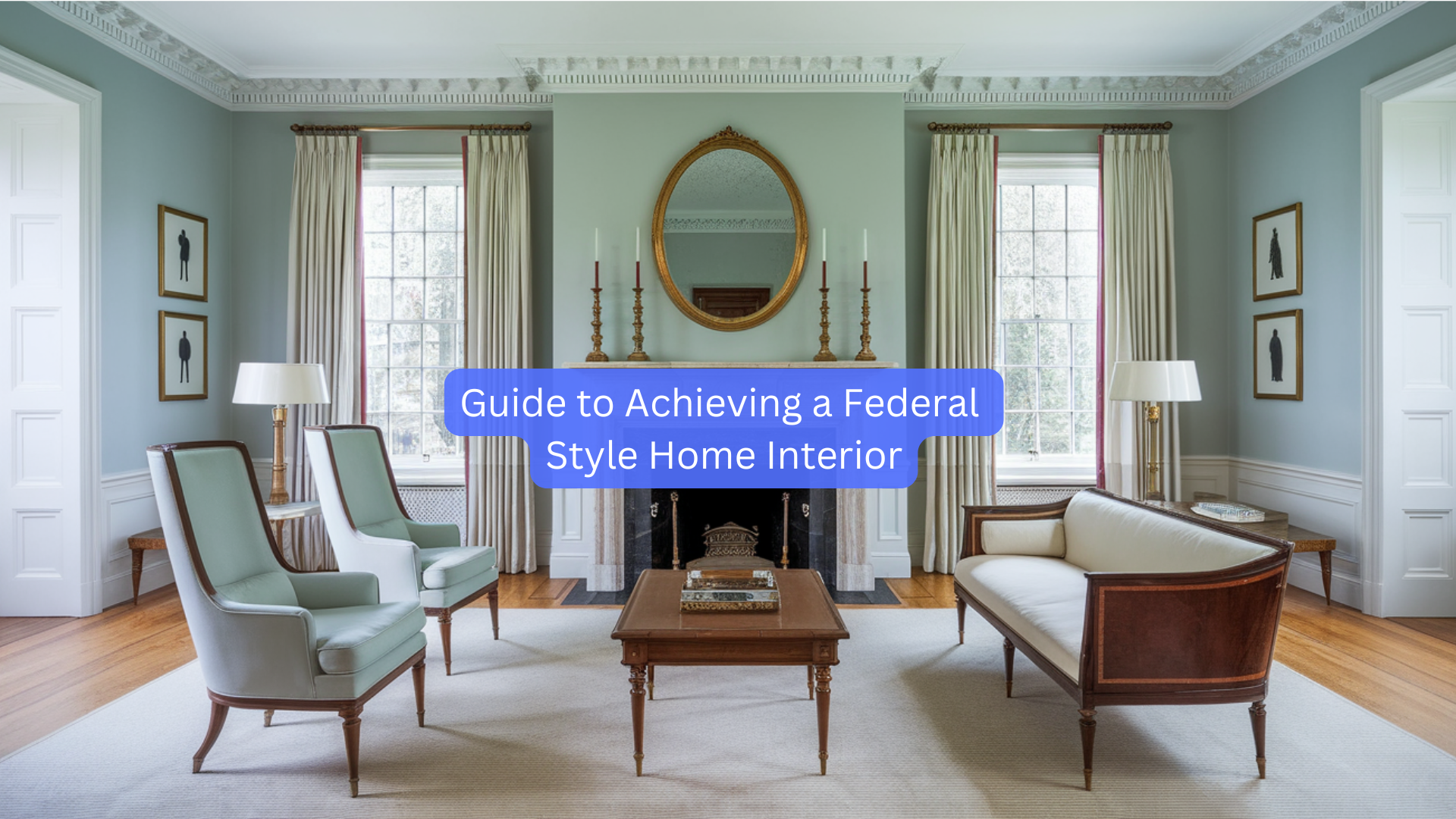Federal homes weren’t just buildings—they were statements of a new American identity. In this guide, you’ll discover what makes the Federal style special, which elements define the look, and how to bring this timeless design into your own home.
This section offers practical advice for fixing up an old house, planning a redesign, or adding touches of early American charm.
Federal style has lasted for 200+ years because it works—these spaces feel good to live in, not just to look at.
What Makes a Room Federal Style?
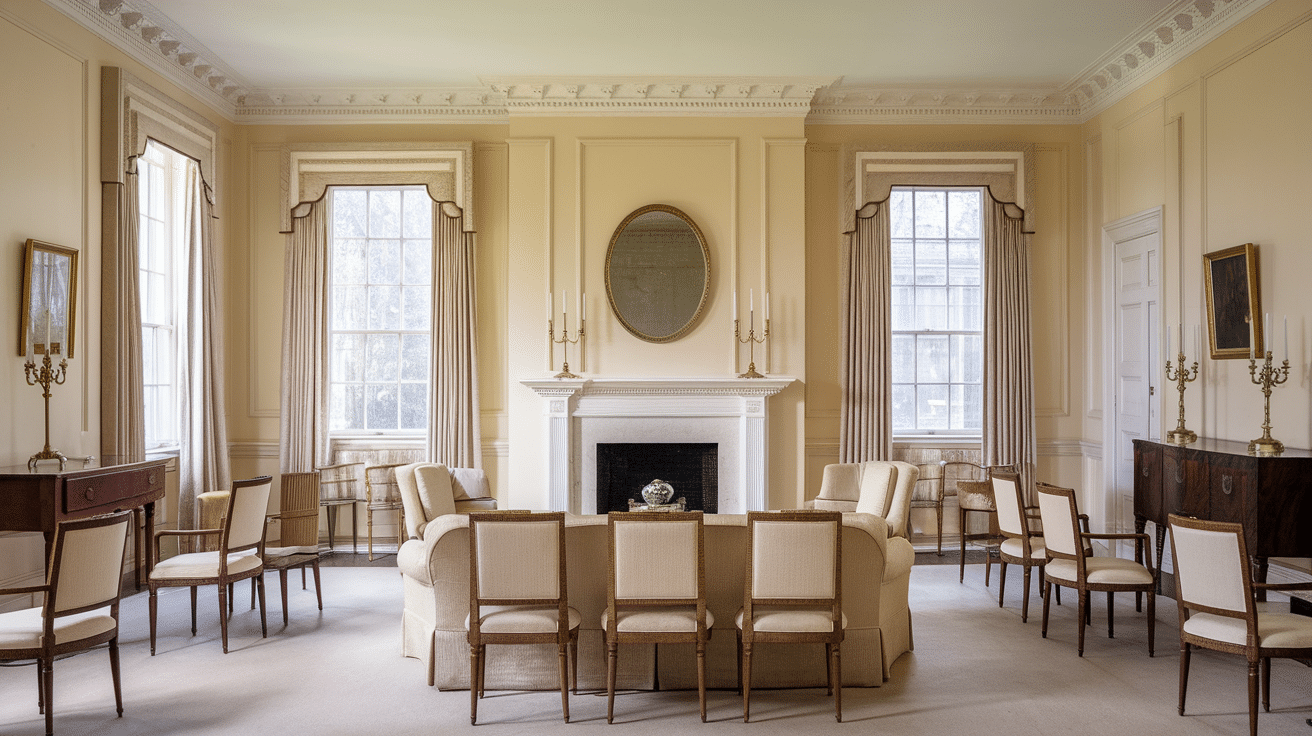
Federal style isn’t just about looks—it’s about creating a sense of order and balance. These interiors have lasted through changing trends because they follow timeless design principles.
What makes the difference between a generic traditional room and a true Federal space? It comes down to three main factors:
- Clean lines and careful proportions that feel right to the eye
- Thoughtful symmetry that creates a sense of calm
- Quality materials used with restraint, not excess
Modern rooms often miss these points. We mix too many styles, ignore proportion, and either over-decorate or go too minimalist. Federal designers had clear rules, and those rules still create beautiful rooms today.
The History Behind Federal Style
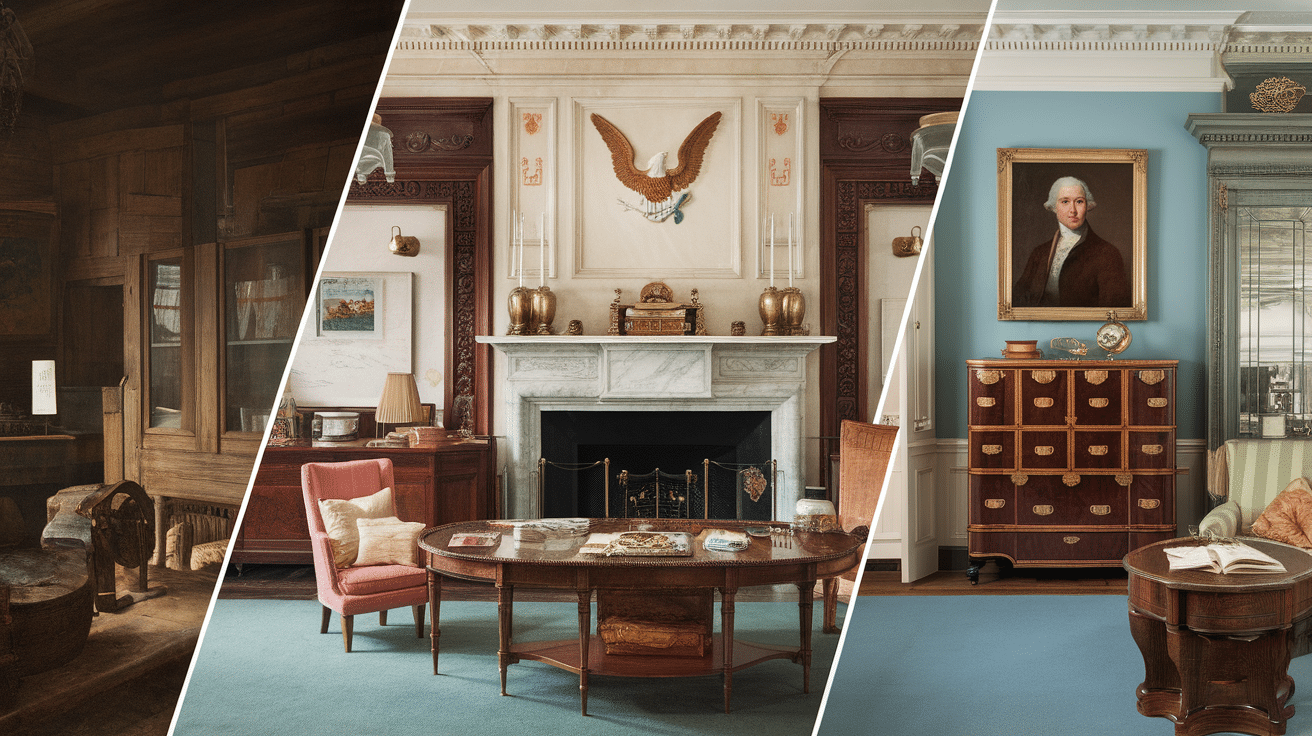
The Federal style emerged right after the American Revolution (1780-1830) when the new nation was finding its own identity:
- Americans wanted to break from British Colonial styles
- The young democracy looked to ancient Greece and Rome for inspiration
- New trade relationships brought fresh design ideas from Europe
- Growing prosperity created a demand for more refined homes
The result was a style that feels distinctly American—practical with just enough decoration to show quality craftsmanship.
Unlike the fussy Victorian style that came later, Federal interiors aimed for a quiet sort of beauty. Nothing shouts for attention; every element plays its proper role.
Common Features in Federal Homes
Let’s break down what makes these homes special:
1. The Central Hall: First Impressions Matter
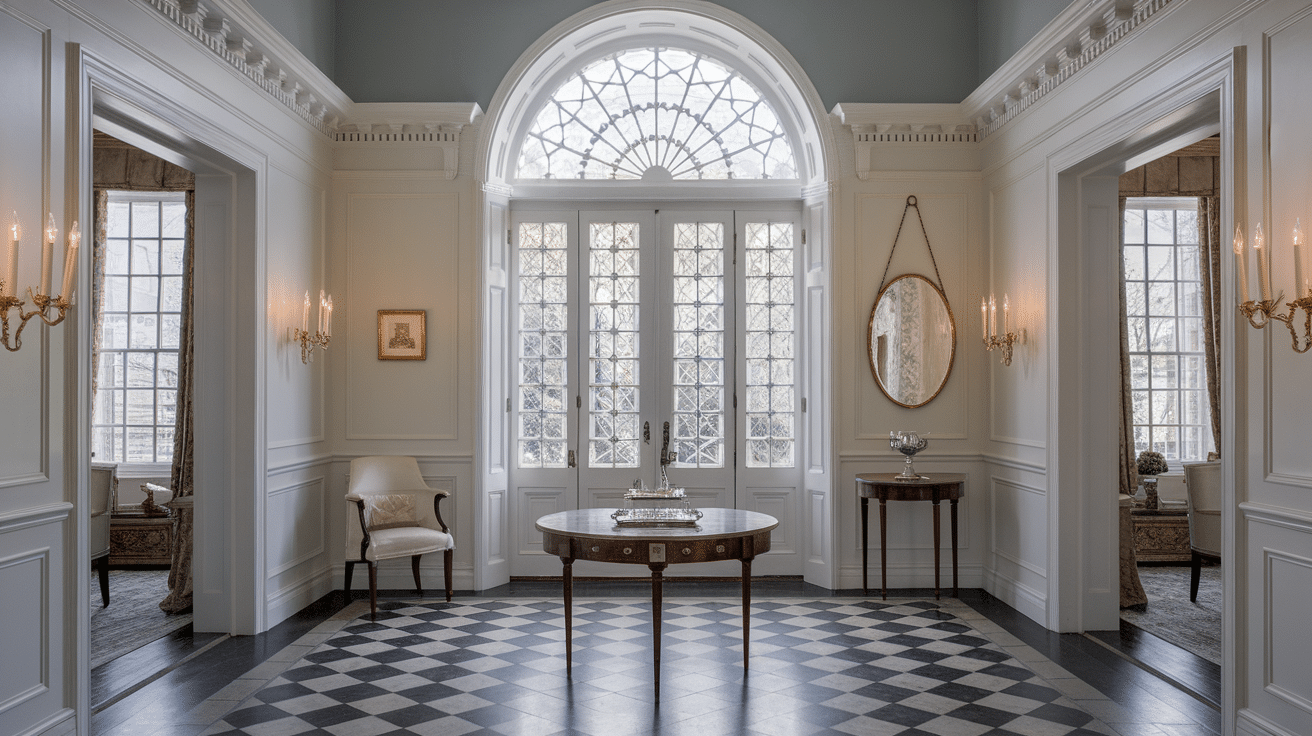
The entry hall is crucial in Federal homes:
- Often features a distinctive fanlight window above the door
- Usually has a center table or round table with a balanced arrangement
- Sometimes displayes an American Eagle mirror or artwork
- Creates a clear path to public rooms while screening private areas
2. Formal vs. Informal Spaces
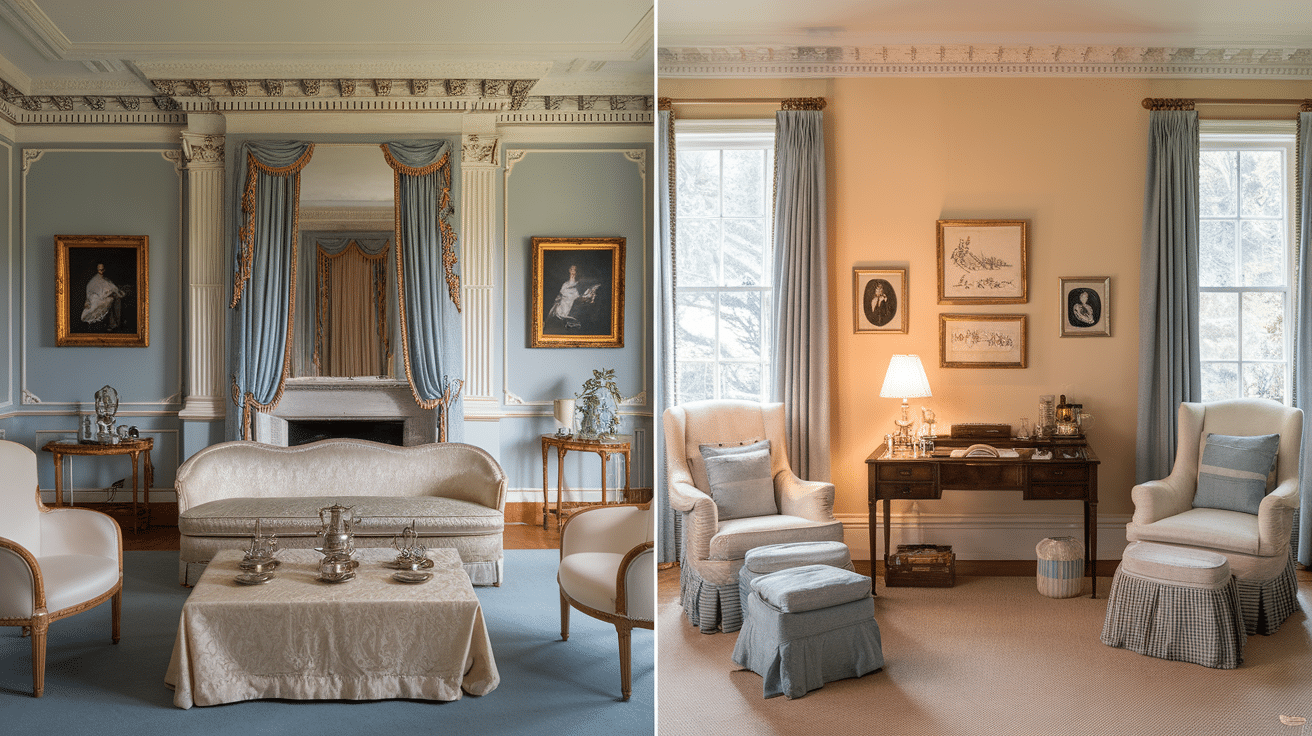
Federal homes make clear distinctions between public and private areas:
- The front parlor features the finest furniture and decorative elements
- Family sitting rooms are comfortable but still orderly
- Bedchambers are private but not casual—still decorated with care
- Service spaces like kitchens are functional but follow the same design principles
3. Windows and Light
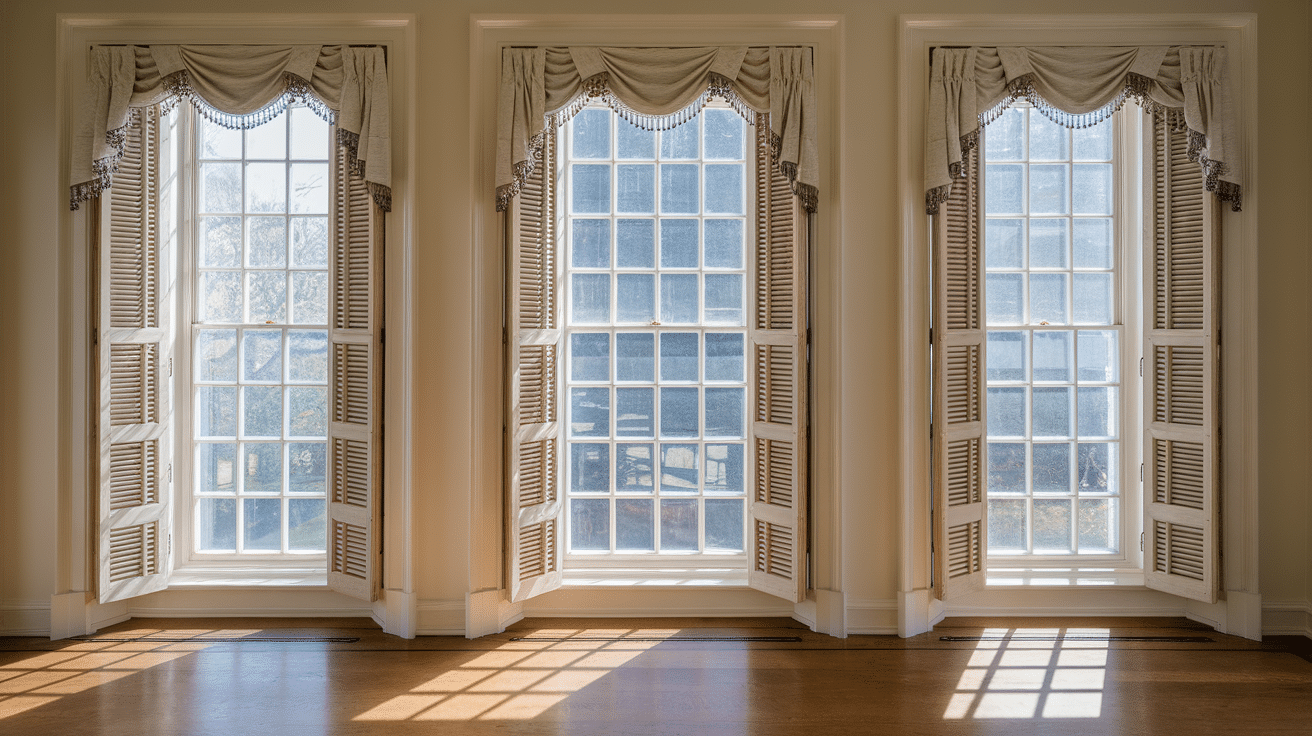
Windows are treated with special attention:
- Tall, narrow windows with many small panes
- Often arranged in symmetrical groups of three
- Window treatments are simple but elegant—straight valances rather than swags
- Shutters provide privacy and light control
4. Architectural Details
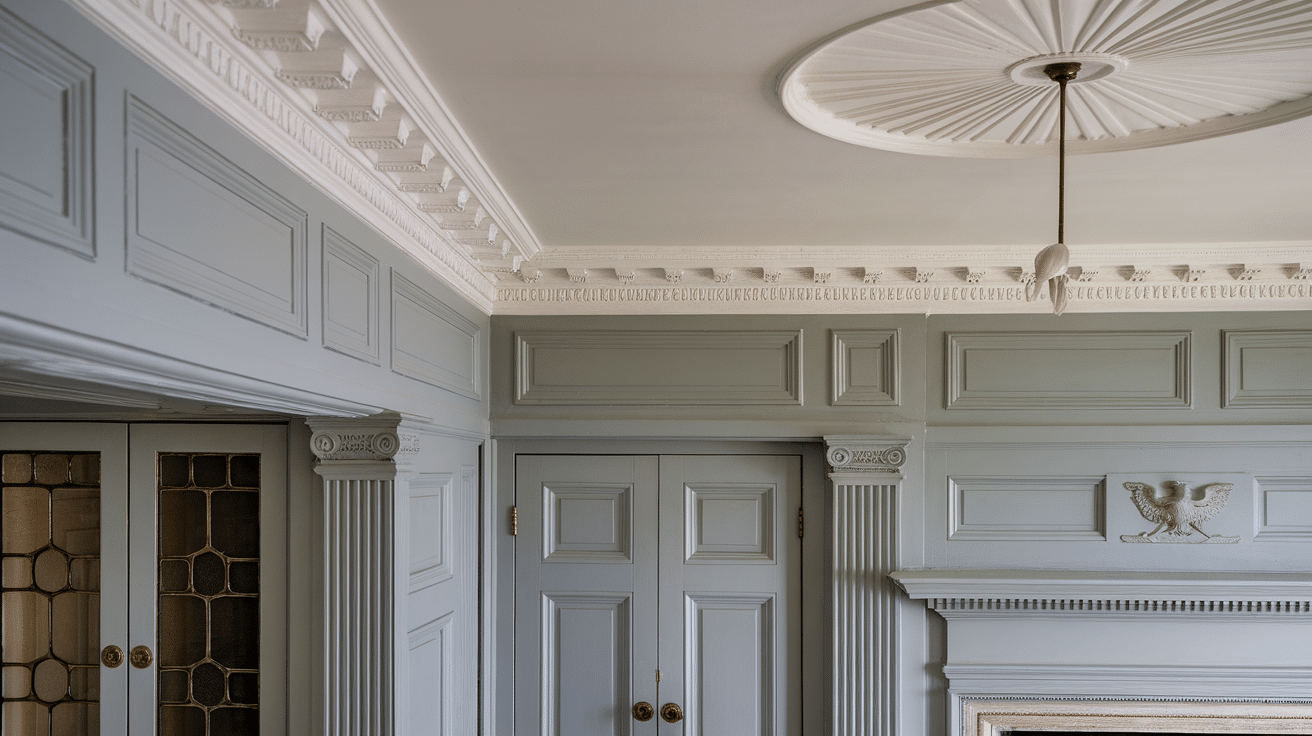
Federal homes feature refined details that still catch the eye today:
- Delicate crown moldings with dentil details or egg-and-dart patterns
- Panel molding on walls to create visual structure
- Fluted columns flanking doorways
- Ceiling medallions in formal rooms
Building the Federal Look Step by Step
Creating a Federal interior isn’t about buying a matching furniture set. It’s about understanding the principles that guided the original designers:
Color Choices That Set the Tone

The right colors create the Federal mood:
- Walls in soft whites, pale blues, or light grays
- Deeper colors for dining rooms—muted reds or sage greens
- Woodwork in crisp white or cream for contrast
- Richly colored woods like mahogany for furniture
These colors feel calm and timeless. They don’t jump out at you—they create a backdrop for living.
Try Benjamin Moore’s Historical Collection for authentic shades like “Wythe Blue,” “Powell Buff,” or “Hepplewhite Ivory.”
Furniture That Defines the Style
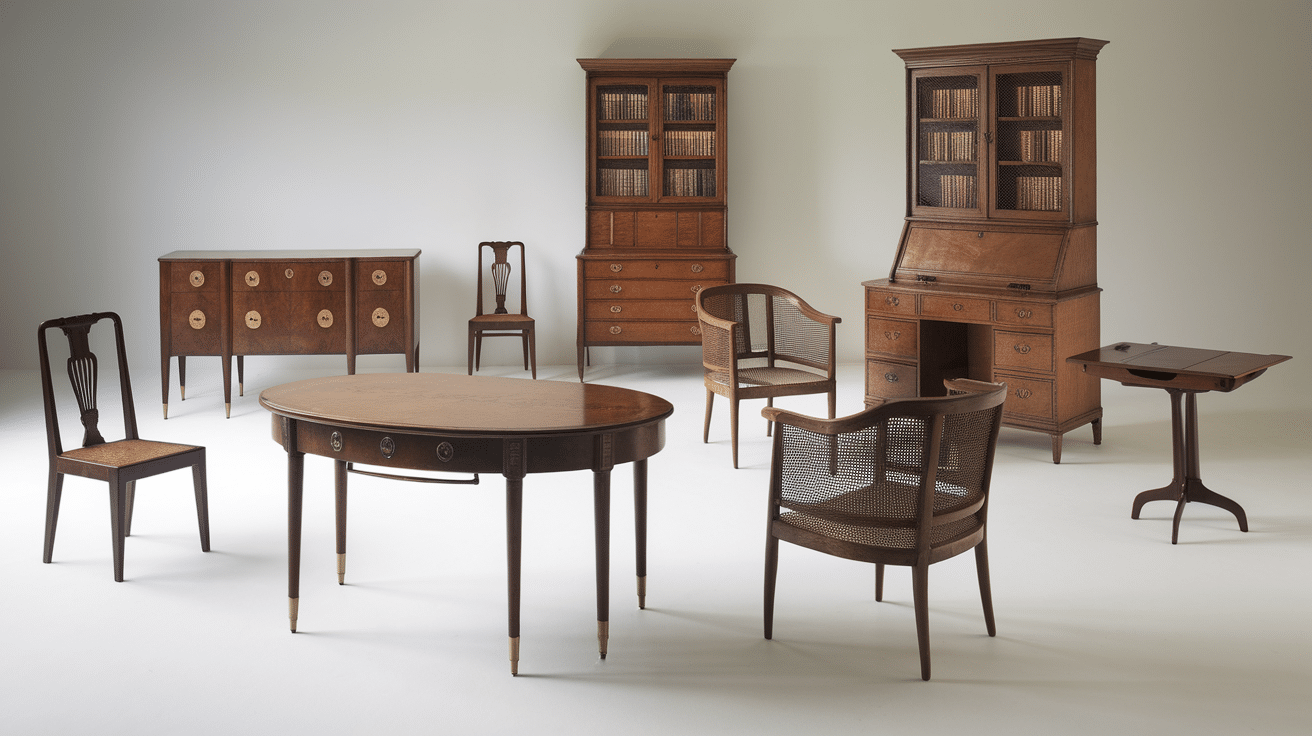
Federal furniture has a distinct look:
- Straight, slender legs that often taper down
- Shield-back or oval-back chairs
- Sideboards with simple brass pulls
- Tables with fine inlay work
What to look for:
- Clean lines without heavy carving
- Light, elegant proportions
- Simple brass hardware
- Dark woods with satiny finishes
What to avoid:
- Bulky, overstuffed pieces
- Distressed or heavily aged finishes
- Ornate carvings or details
- Too many patterns or colors
Fabrics and Patterns: Subtle Is Better
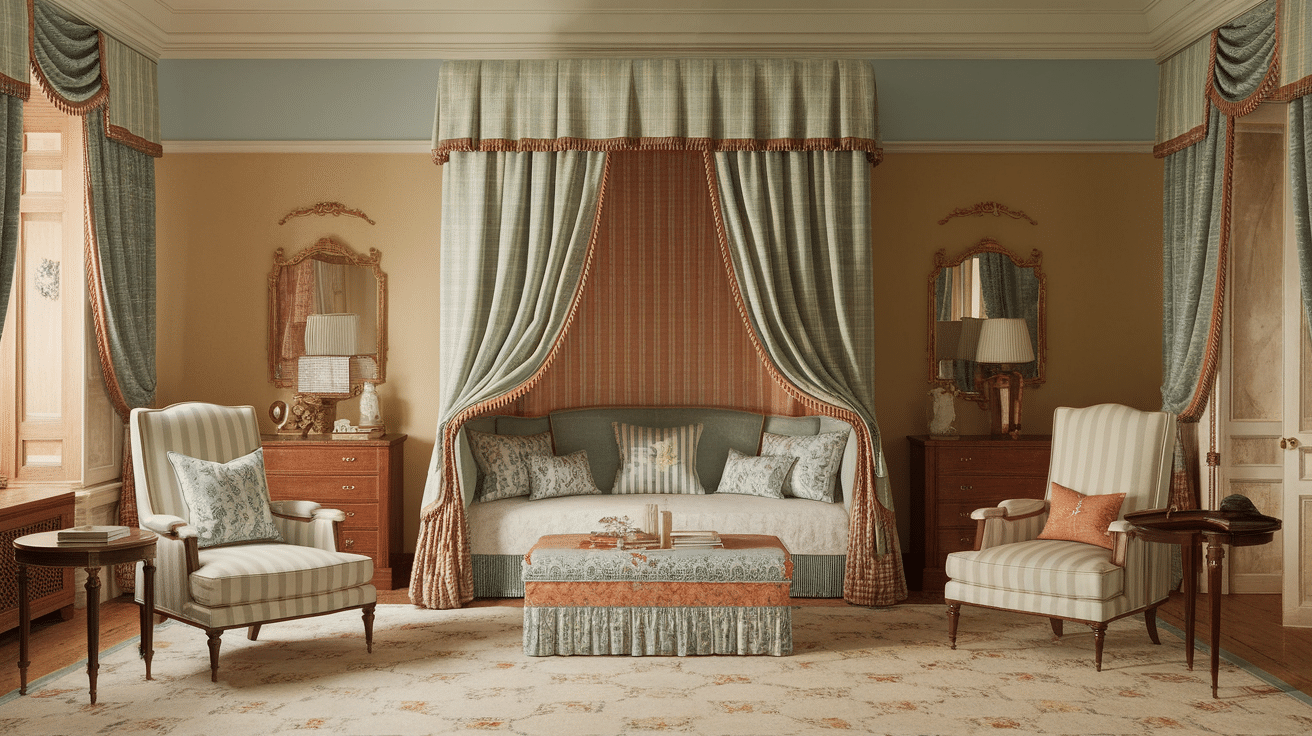
Federal textiles follow the same principles of restraint:
- Small-scale stripes or checks
- Subtle damasks in single colors
- Plain linen or cotton with an interesting texture
- Silk for formal rooms
These aren’t statement fabrics. They complement the architecture and furniture without competing for attention.
A good test: If a pattern seems too bold or busy for a classic men’s shirt, it’s probably wrong for Federal style.
Decorative Elements That Complete the Look
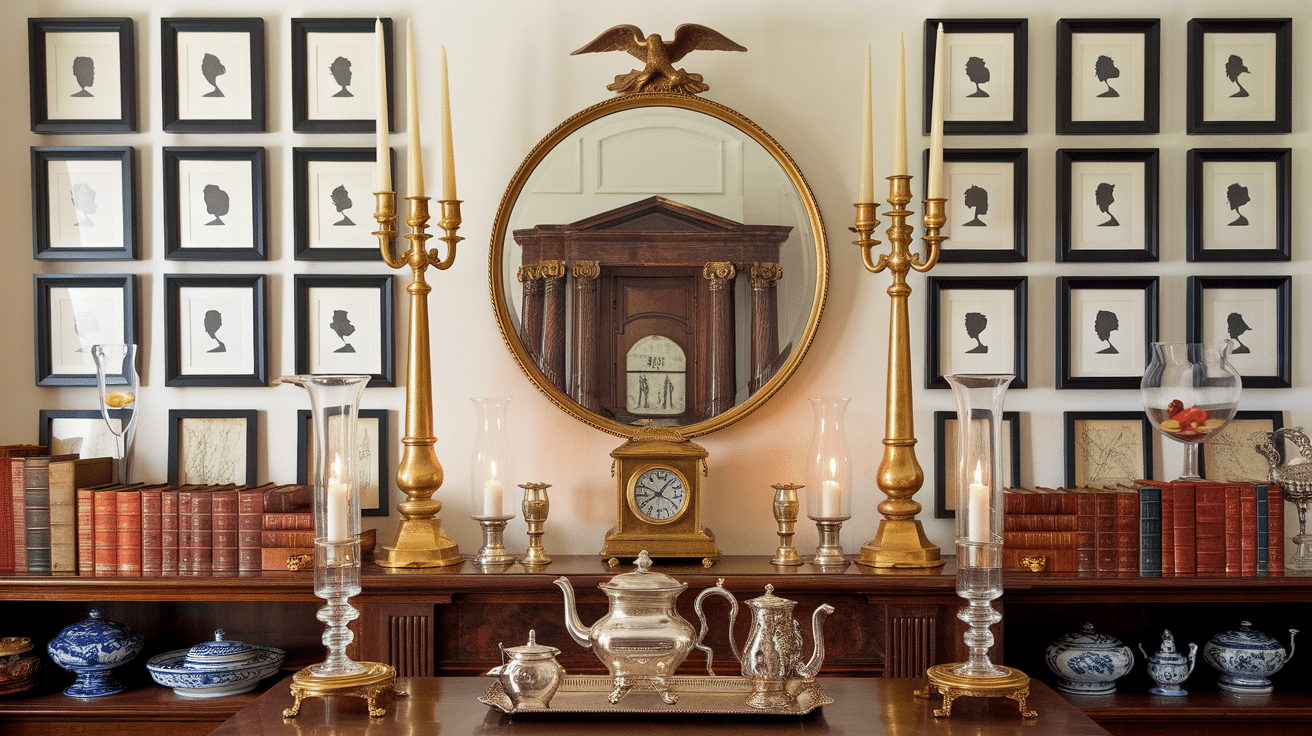
The finishing touches matter most:
- Brass candlesticks and sconces
- Oval mirrors with gilded frames
- Silhouettes in simple black frames
- Maps and botanical prints
- Clear glass hurricanes
These items should be arranged in balanced groups. Place things in pairs. Create symmetry on mantels and tabletops. Every item should have a purpose and a proper place.
How to Bring Federal Style Home
You don’t need to live in a historic home to use Federal design ideas:
1. For Renters

- Use temporary wall treatments like removable wallpaper in small patterns
- Replace basic light fixtures with Federal-style pendants or sconces
- Add panel molding with removable adhesive
- Use pairs of matching lamps, artwork, and accessories to create symmetry
- Replace plain doorknobs with oval brass ones you can take with you
2. For Homeowners
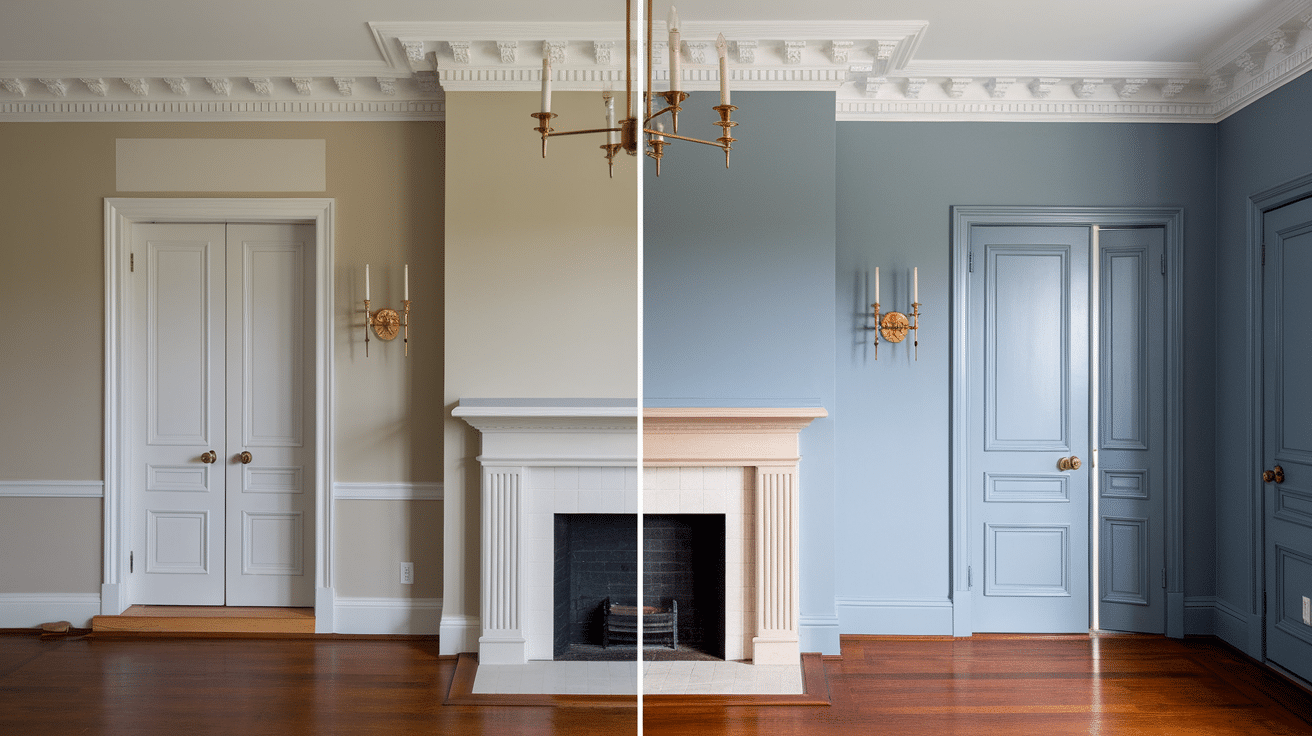
- Paint trim white against colored walls
- Add crown molding with Federal details like dental work
- Upgrade fireplace surrounds with simple classical designs
- Install period-appropriate lighting fixtures
- Replace hollow-core doors with six-panel designs
3. For Everyone
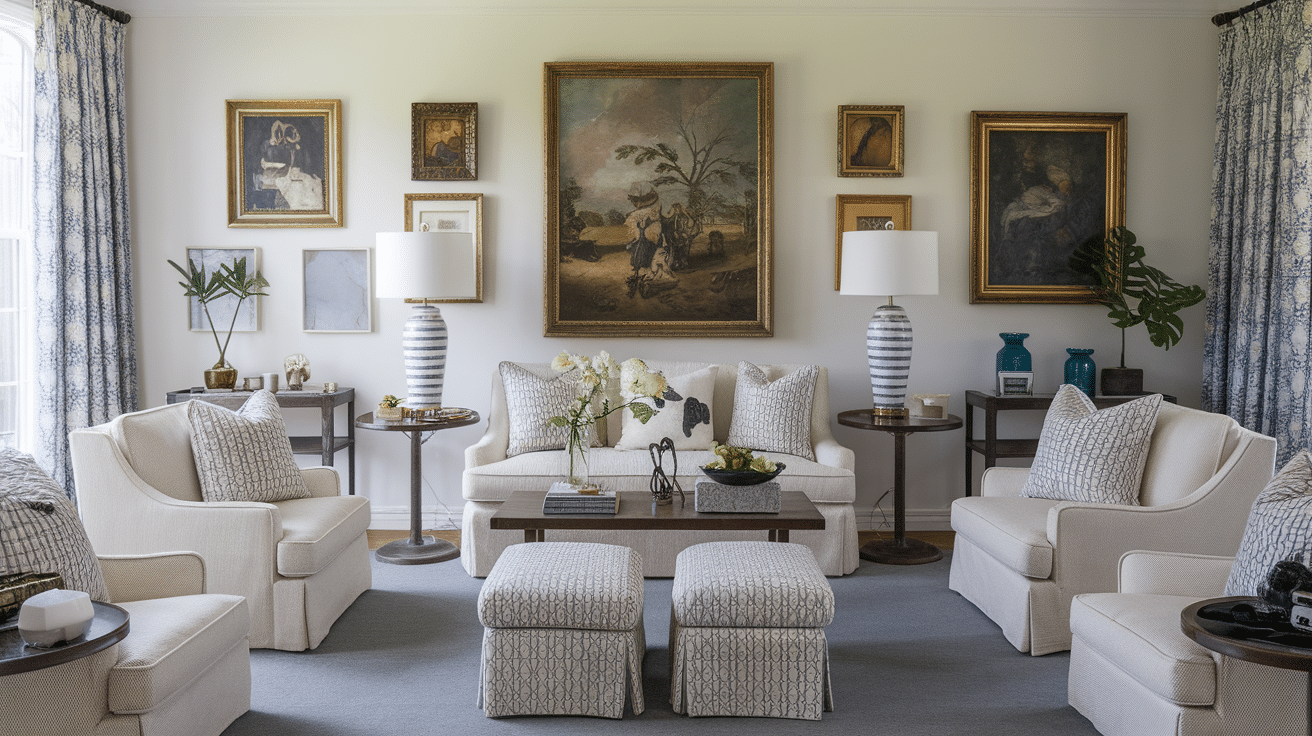
- Arrange furniture symmetrically, pulled away from walls
- Use proper scale—Federal rooms weren’t crowded with furniture
- Choose quality over quantity for accessories
- Place items in pairs to create a balance
- Keep surfaces uncluttered and organized
Budget-Friendly Federal Updates
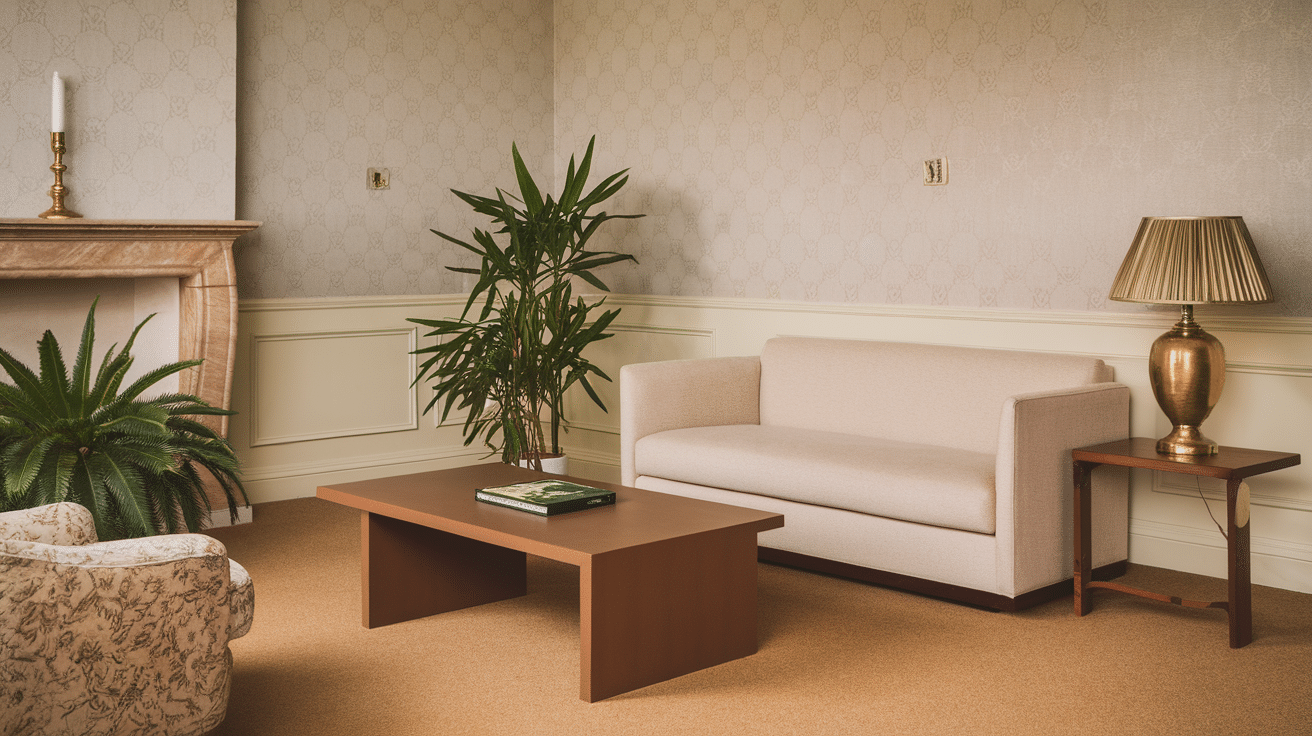
- Replace switchplates with brass oval ones
- Add brass cabinet hardware with simple designs
- Display hardcover books with dust jackets removed
- Group simple brass or silver candlesticks on mantels
- Frame inexpensive silhouettes or botanical prints
Small changes can shift the feel of your space. Even rearranging what you have into more symmetrical groupings will make a big difference.
Daily Life in Federal-Style Spaces
Federal homes weren’t museums—they were practical living spaces:
Formal Yet Livable
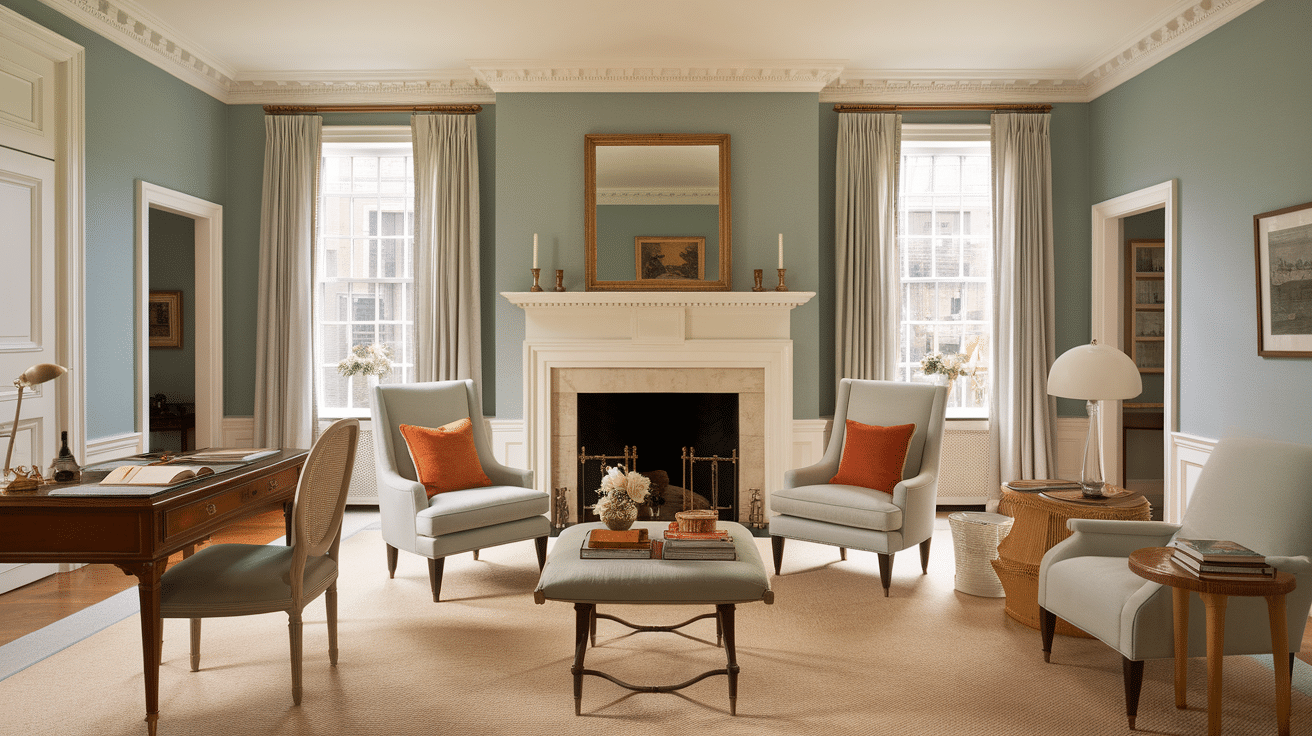
Federal design created spaces that were beautiful but functional:
- Furniture was arranged for conversation, not just looks
- Tables had specific purposes—card tables, tea tables, dining tables
- Lighting was placed for practical tasks like reading and needlework
- Storage pieces were both decorative and useful
Proper Places for Everything
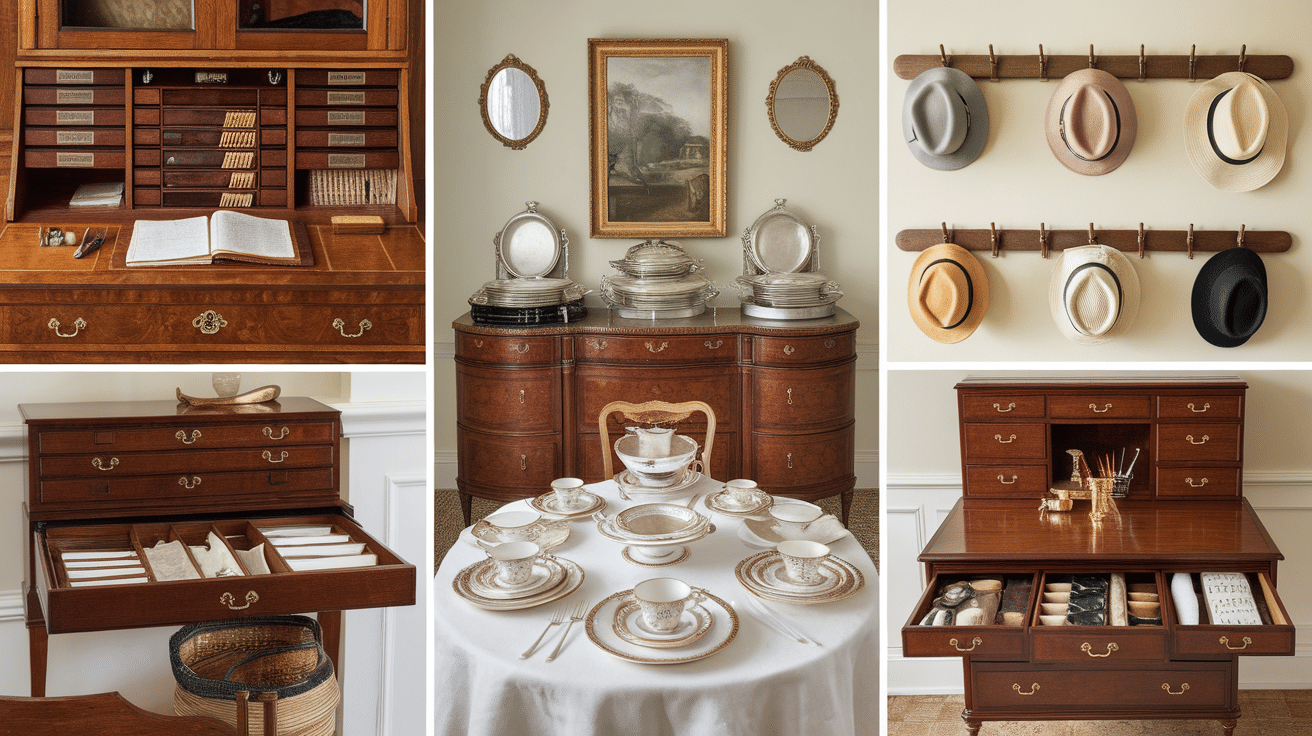
Order was important in Federal homes:
- Each room had a clear purpose
- Furniture was arranged according to function
- Personal items were stored in proper cases and boxes
- Displays were carefully composed, not random
Today’s Lifestyle in a Federal Framework
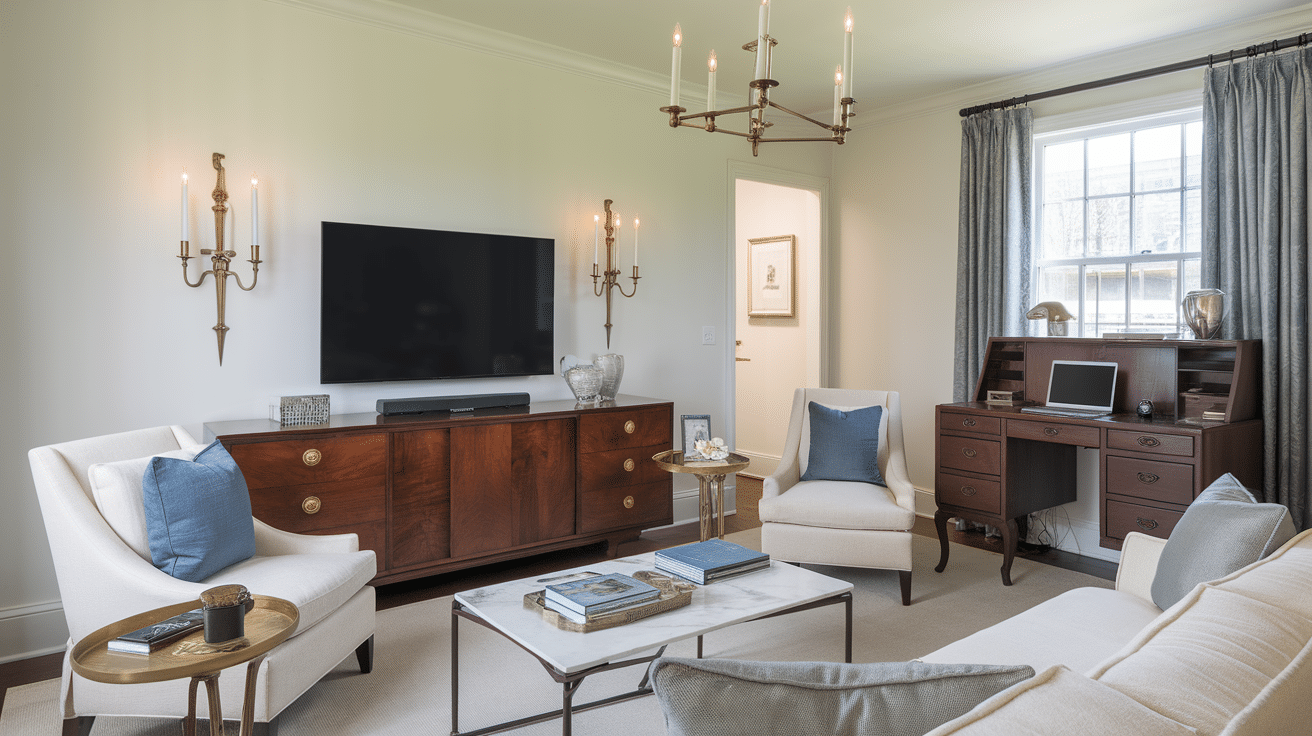
You can maintain Federal principles while living a modern life:
- Use Federal sideboards for modern electronics
- Create conversation areas with proper spacing for today’s social needs
- Adapt period lighting for modern bulbs and placement
- Keep the symmetry but adjust the scale for today’s larger rooms
What we can learn from this is that good design transcends time—the principles of balance, proportion, and quality never go out of style.
Conclusion
Federal-style creators didn’t have our technology, but they understood something we often forget: good design should feel timeless. They built spaces that still look and feel right after 200 years.
The key lessons from Federal Interiors are surprisingly simple:
- Use balance and symmetry
- Choose quality materials
- Keep decoration refined and meaningful
- Let every element serve a purpose
These principles worked in 1800, and they work today. While our lifestyles have changed, the basics of what makes a pleasant room haven’t.
You came looking for how to create a Federal-style home. Now you know—it’s about balance, restraint, and quality—an approach that never gets old.
Have you tried incorporating any Federal elements in your home? What worked best for you?

